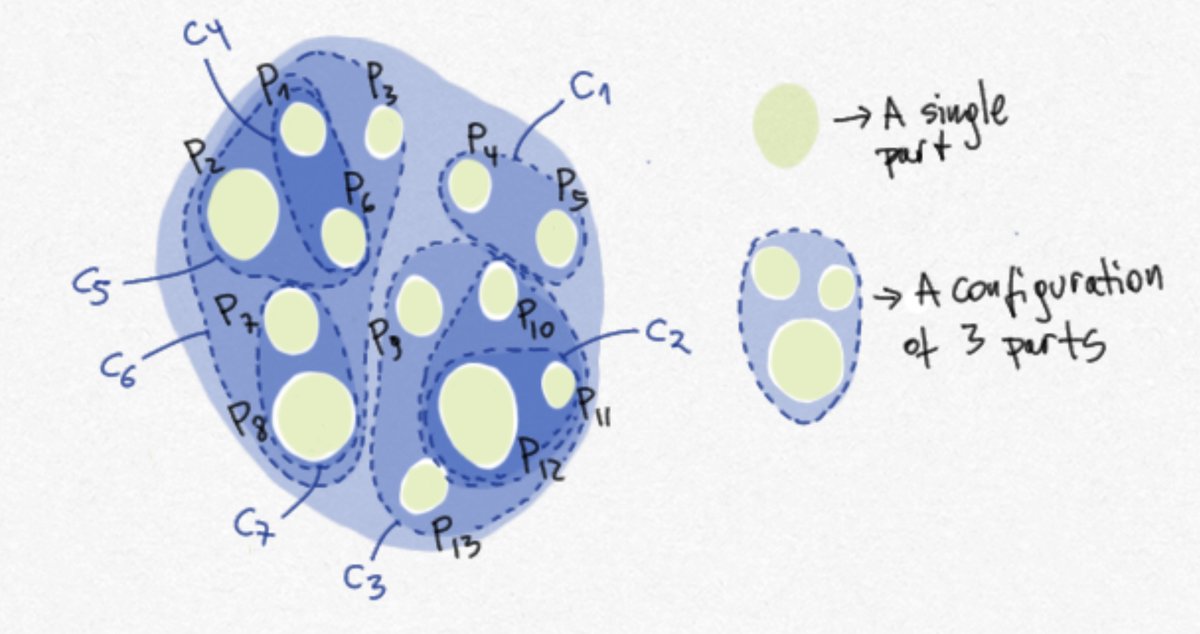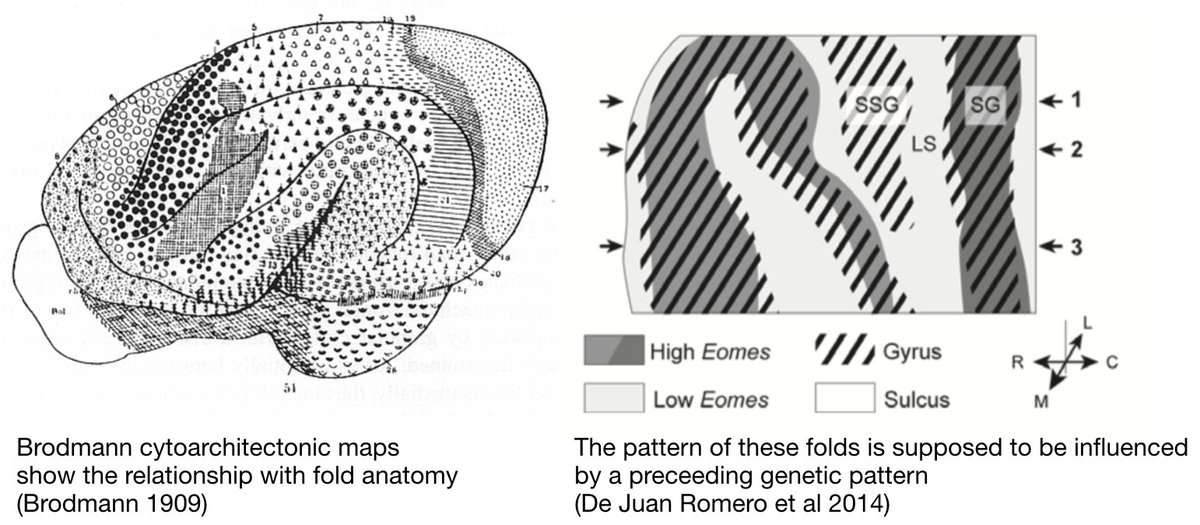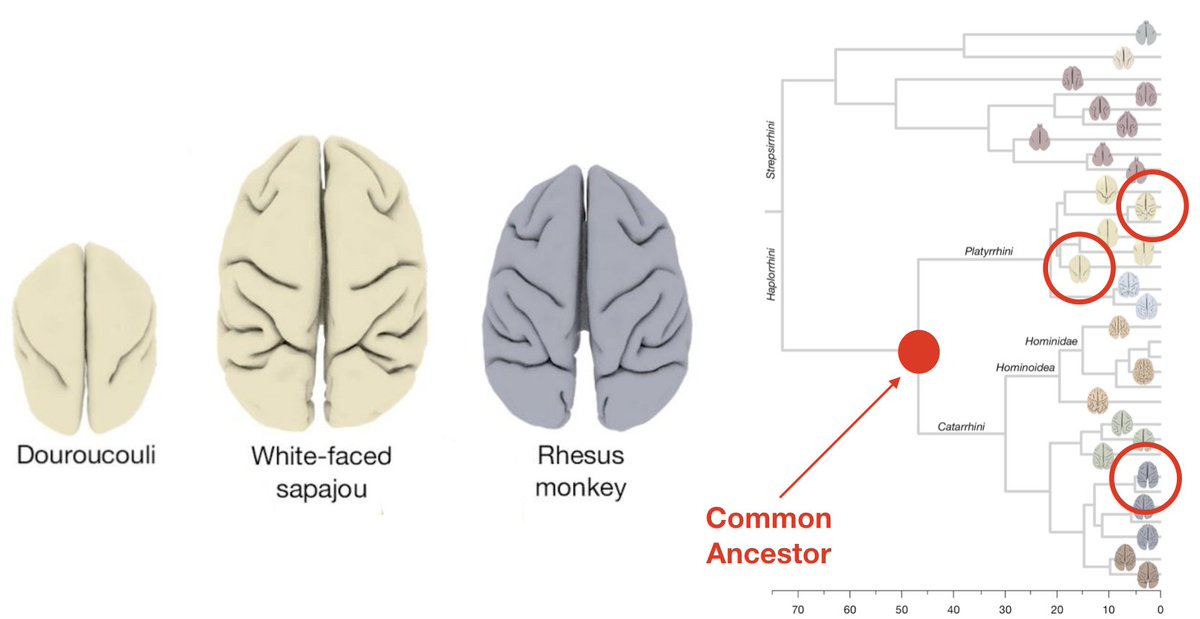
1. Does the explanation of biological phenomena require appealing to 𝗲𝗺𝗲𝗿𝗴𝗲𝗻𝗰𝗲?
youtube.com/clip/UgkxjSerf…
youtube.com/clip/UgkxjSerf…
In Chapter 1 we said that biological systems realise 𝙘𝙡𝙤𝙨𝙪𝙧𝙚: a causal regime 𝗶𝗿𝗿𝗲𝗱𝘂𝗰𝗶𝗯𝗹𝗲 𝗮𝗻𝗱 𝗱𝗶𝘀𝘁𝗶𝗻𝗰𝘁 from those at work in other physical and chemical natural systems, and thus an 𝗲𝗺𝗲𝗿𝗴𝗲𝗻𝘁 property.
https://twitter.com/R3RT0/status/1525467343161372673?s=20&t=HLhblOapG7U0UGgV-YLnJg
2. 𝗧𝗵𝗲 𝗽𝗵𝗶𝗹𝗼𝘀𝗼𝗽𝗵𝗶𝗰𝗮𝗹 𝗰𝗵𝗮𝗹𝗹𝗲𝗻𝗴𝗲 𝘁𝗼 𝗲𝗺𝗲𝗿𝗴𝗲𝗻𝗰𝗲
Philosophical work on emergence began in the late 19th century, with British emergentism.
en.wikipedia.org/wiki/Emergenti…
Philosophical work on emergence began in the late 19th century, with British emergentism.
en.wikipedia.org/wiki/Emergenti…
A central challenge to the idea of emergence is articulated in Kim’s 𝗲𝘅𝗰𝗹𝘂𝘀𝗶𝗼𝗻 𝗮𝗿𝗴𝘂𝗺𝗲𝗻𝘁
link.springer.com/article/10.100…
link.springer.com/article/10.100…
3. 𝗞𝗶𝗺’𝘀 𝗲𝘅𝗰𝗹𝘂𝘀𝗶𝗼𝗻 𝗮𝗿𝗴𝘂𝗺𝗲𝗻𝘁: definitions
For a whole W composed of parts Pi, each with properties Ni
𝗦𝘂𝗽𝗲𝗿𝘃𝗲𝗻𝗶𝗲𝗻𝗰𝗲: If property M emerges from properties Ni, then M supervenes on Ni
For a whole W composed of parts Pi, each with properties Ni
𝗦𝘂𝗽𝗲𝗿𝘃𝗲𝗻𝗶𝗲𝗻𝗰𝗲: If property M emerges from properties Ni, then M supervenes on Ni

𝗜𝗿𝗿𝗲𝗱𝘂𝗰𝗶𝗯𝗶𝗹𝗶𝘁𝘆: Property M is emergent from a set of properties N1, …, Nn only if M is not functionally reducible with the set of the Ns as its realiser.
#definitions
#definitions
4. 𝗞𝗶𝗺’𝘀 𝗲𝘅𝗰𝗹𝘂𝘀𝗶𝗼𝗻 𝗮𝗿𝗴𝘂𝗺𝗲𝗻𝘁: Statement
If an emergent property M is supervenient on some basal conditions P, and M is said to cause some effect, one may ask 𝙬𝙝𝙮 𝙘𝙖𝙣𝙣𝙤𝙩 𝙋 𝙙𝙞𝙨𝙥𝙡𝙖𝙘𝙚 𝙈 as a cause of any putative effect of M?”
If an emergent property M is supervenient on some basal conditions P, and M is said to cause some effect, one may ask 𝙬𝙝𝙮 𝙘𝙖𝙣𝙣𝙤𝙩 𝙋 𝙙𝙞𝙨𝙥𝙡𝙖𝙘𝙚 𝙈 as a cause of any putative effect of M?”

5. 𝗞𝗶𝗺’𝘀 𝗲𝘅𝗰𝗹𝘂𝘀𝗶𝗼𝗻 𝗮𝗿𝗴𝘂𝗺𝗲𝗻𝘁: Problems
𝙘𝙖𝙪𝙨𝙖𝙡 𝙙𝙧𝙖𝙞𝙣𝙖𝙜𝙚: if the causal powers of an emergent entity can be reduced to those of its constituents, and if, as may indeed be the case, there is no “rock-bottom” level of reality, then...
𝙘𝙖𝙪𝙨𝙖𝙡 𝙙𝙧𝙖𝙞𝙣𝙖𝙜𝙚: if the causal powers of an emergent entity can be reduced to those of its constituents, and if, as may indeed be the case, there is no “rock-bottom” level of reality, then...
...causal powers would "drain away into a bottomless pit and there would not be any causation anywhere". It'd be turtles over turtles all the way down...
additionally, if there were actually a rock-bottom, the exclusion argument would 𝗳𝗼𝗿𝗰𝗲 𝗿𝗲𝗱𝘂𝗰𝘁𝗶𝘃𝗲 𝗽𝗵𝘆𝘀𝗶𝗰𝗮𝗹𝗶𝘀𝗺, and any appeal to distinctively biological causal relations would be at best a heuristic tool...
6. Against Kim's exclusion argument, Moreno & Mossio provide an argument for closure being a specific kind of higher-level 𝗲𝗺𝗲𝗿𝗴𝗲𝗻𝘁 configuration, 𝗼𝗻𝘁𝗼𝗹𝗼𝗴𝗶𝗰𝗮𝗹𝗹𝘆 𝗶𝗿𝗿𝗲𝗱𝘂𝗰𝗶𝗯𝗹𝗲.
Their argument is two-fold:
Their argument is two-fold:
1) closure can be consistently understood as an 𝗲𝗺𝗲𝗿𝗴𝗲𝗻𝘁 𝗿𝗲𝗴𝗶𝗺𝗲 𝗼𝗳 𝗰𝗮𝘂𝘀𝗮𝘁𝗶𝗼𝗻 all while staying strongly committed to 𝗺𝗼𝗻𝗶𝘀𝗺.
2) An emergent closed organisation 𝗱𝗼𝗲𝘀𝗻’𝘁 𝗿𝗲𝗾𝘂𝗶𝗿𝗲 𝗶𝗻𝘁𝗲𝗿-𝗹𝗲𝘃𝗲𝗹 𝗰𝗮𝘂𝘀𝗮𝘁𝗶𝗼𝗻 (specifically, nested causation, i.e., causation from the whole into its own parts).
7. 𝗜𝗿𝗿𝗲𝗱𝘂𝗰𝗶𝗯𝗶𝗹𝗶𝘁𝘆 𝘃𝗲𝗿𝘀𝘂𝘀 𝗻𝗼𝗻-𝗱𝗲𝗿𝗶𝘃𝗮𝗯𝗶𝗹𝗶𝘁𝘆
Importantly, they argue that closure is 𝗶𝗿𝗿𝗲𝗱𝘂𝗰𝗶𝗯𝗹𝗲 and not only 𝗻𝗼𝗻-𝗱𝗲𝗿𝗶𝘃𝗮𝗯𝗹𝗲 (this will have consequences for distinguishing self-maintenance from closure)
Importantly, they argue that closure is 𝗶𝗿𝗿𝗲𝗱𝘂𝗰𝗶𝗯𝗹𝗲 and not only 𝗻𝗼𝗻-𝗱𝗲𝗿𝗶𝘃𝗮𝗯𝗹𝗲 (this will have consequences for distinguishing self-maintenance from closure)
A 𝗻𝗼𝗻-𝗱𝗲𝗿𝗶𝘃𝗮𝗯𝗹𝗲 property of a whole is one that cannot be 𝐩𝐫𝐞𝐝𝐢𝐜𝐭𝐞𝐝 or 𝐞𝐱𝐩𝐥𝐚𝐢𝐧𝐞𝐝 from the properties of its parts.
For example, the property of "containing" is not found on any of the sides of a box.
For example, the property of "containing" is not found on any of the sides of a box.
Non-derivability is 𝗲𝗽𝗶𝘀𝘁𝗲𝗺𝗼𝗹𝗼𝗴𝗶𝗰𝗮𝗹: it denotes a difficulty for predicting or explaining a property, whereas irreducibility is 𝗼𝗻𝘁𝗼𝗹𝗼𝗴𝗶𝗰𝗮𝗹: the entities produced are of a completely new kind.
Non-derivability is a characteristic of 𝗿𝗲𝘀𝘂𝗹𝘁𝗮𝗻𝘁 properties, which are 𝗮𝗴𝗴𝗿𝗲𝗴𝗮𝘁𝗶𝘃𝗲, i.e., the whole possesses it at values that the parts do not.
Irreducible emergent properties are of a kind that only the whole possesses.
Irreducible emergent properties are of a kind that only the whole possesses.
8. 𝗜𝗿𝗿𝗲𝗱𝘂𝗰𝗶𝗯𝗶𝗹𝗶𝘁𝘆 𝗮𝗻𝗱 𝗲𝗺𝗲𝗿𝗴𝗲𝗻𝗰𝗲
The core of Moreno & Mossio's argument for irreducible emergence of closure relies on distinguishing between 𝘀𝘂𝗽𝗲𝗿𝘃𝗲𝗻𝗶𝗲𝗻𝘁 𝗯𝗮𝘀𝗲 and 𝗲𝗺𝗲𝗿𝗴𝗲𝗻𝗰𝗲 𝗯𝗮𝘀𝗲 of a property.
The core of Moreno & Mossio's argument for irreducible emergence of closure relies on distinguishing between 𝘀𝘂𝗽𝗲𝗿𝘃𝗲𝗻𝗶𝗲𝗻𝘁 𝗯𝗮𝘀𝗲 and 𝗲𝗺𝗲𝗿𝗴𝗲𝗻𝗰𝗲 𝗯𝗮𝘀𝗲 of a property.
For this, they define 𝗿𝗲𝗹𝗮𝘁𝗶𝗼𝗻𝗮𝗹 𝘀𝘂𝗽𝗲𝗿𝘃𝗲𝗻𝗶𝗲𝗻𝗰𝗲: a supervenience relation holding between the whole and a 𝗰𝗼𝗻𝗳𝗶𝗴𝘂𝗿𝗮𝘁𝗶𝗼𝗻 of its constituents.
#definition
#definition
This 𝗿𝗲𝗹𝗮𝘁𝗶𝗼𝗻𝗮𝗹 point of view argues that 𝗰𝗼𝗻𝗳𝗶𝗴𝘂𝗿𝗮𝘁𝗶𝗼𝗻𝘀 C have their own properties, distinct from those of their components (the parts P) 

This is a 𝗰𝗼𝗻𝘀𝘁𝗶𝘁𝘂𝘁𝗶𝘃𝗲 interpretation of relational supervenience: supervenient properties can be reduced to 𝗰𝗼𝗻𝗳𝗶𝗴𝘂𝗿𝗮𝘁𝗶𝗼𝗻 properties (but not to the properties of the parts)
Moreno and Mossio then argue that emergent properties do not emerge from configurational properties, but between configurational properties and the properties of different categories and entities which do not belong to the configuration (the parts or individual processes)
9. 𝗦𝘂𝗽𝗲𝗿𝘃𝗲𝗻𝗶𝗲𝗻𝗰𝗲 𝗮𝗻𝗱 𝗰𝗼𝗻𝘀𝘁𝗶𝘁𝘂𝘁𝗶𝗼𝗻
Kim argues that emergent properties are micro-based macro properties.
Here, the supervenient property M has causal powers relative to the parts Pi, but not relative to the properties S of the configurations of parts Ni
Kim argues that emergent properties are micro-based macro properties.
Here, the supervenient property M has causal powers relative to the parts Pi, but not relative to the properties S of the configurations of parts Ni
The supervenient property M is 𝗰𝗼𝗻𝘀𝘁𝗶𝘁𝘂𝘁𝗲𝗱 by the properties Si of the configurations – they are equivalent.
M&M's reply to Kim's exclusion argument
is that it is the relational properties Si of configurations which are genuinely emergent: the properties Si of the configuration C are irreducible to any entity that does not possess the same Si.
is that it is the relational properties Si of configurations which are genuinely emergent: the properties Si of the configuration C are irreducible to any entity that does not possess the same Si.
It is 𝗿𝗲𝗹𝗮𝘁𝗲𝗱𝗻𝗲𝘀𝘀 𝘁𝗵𝗮𝘁 𝗯𝗿𝗶𝗻𝗴𝘀 𝗼𝗻𝘁𝗼𝗹𝗼𝗴𝗶𝗰𝗮𝗹 𝗻𝗼𝘃𝗲𝗹𝘁𝘆, by stating that configurations may possess distinct causal powers. M is constituted by Si, and Si emerges from configurations of the parts Pi. 

11. 𝗖𝗼𝗻𝘀𝘁𝗿𝗮𝗶𝗻𝘁𝘀 𝗮𝗻𝗱 𝗖𝗹𝗼𝘀𝘂𝗿𝗲 𝗮𝘀 𝗘𝗺𝗲𝗿𝗴𝗲𝗻𝘁 𝗗𝗲𝘁𝗲𝗿𝗺𝗶𝗻𝗮𝘁𝗶𝗼𝗻𝘀
The reply refers to 3 kinds of emergent bases:
1. 𝗦𝘂𝗯𝘀𝗲𝘁 (Psset): The configuration C is emergent on any proper subset of the parts
The reply refers to 3 kinds of emergent bases:
1. 𝗦𝘂𝗯𝘀𝗲𝘁 (Psset): The configuration C is emergent on any proper subset of the parts
2. 𝗦𝘂𝗯𝘀𝘁𝗿𝗮𝘁𝗲 (Psstr): C is emergent on a collection of its constituents taken separately (potential ingredients)
3. 𝗦𝘂𝗿𝗿𝗼𝘂𝗻𝗱𝗶𝗻𝗴𝘀 (Psurr): C is emergent on external elements that do not constitute C, even if they share the same spatial localisation.
3. 𝗦𝘂𝗿𝗿𝗼𝘂𝗻𝗱𝗶𝗻𝗴𝘀 (Psurr): C is emergent on external elements that do not constitute C, even if they share the same spatial localisation.
12. Constraints are configurations that exert causal actions on processes while being conserved with respect to them. In other terms:
1) At a relevant scale 𝜏, a constraint is a configuration Cconstr exerting a causal action on Psurr, which produces an observable difference between Psurr and Psurr^C (i.e., the surrounding parts alone, or under the effect of the constraint C)
2) At the same scale 𝜏, Cconstr is conserved throughout Psurr. Its emergent properties Si remain unaffected throughout Psurr.
A 𝗰𝗹𝗼𝘀𝗲𝗱 organisation is a configuration Corg constituted of configurations Cconstr. Then:
1) closure is 𝗶𝗿𝗿𝗲𝗱𝘂𝗰𝗶𝗯𝗹𝗲 to Psurr,
2) closure is 𝗲𝗺𝗲𝗿𝗴𝗲𝗻𝘁 relative to Psstr,
1) closure is 𝗶𝗿𝗿𝗲𝗱𝘂𝗰𝗶𝗯𝗹𝗲 to Psurr,
2) closure is 𝗲𝗺𝗲𝗿𝗴𝗲𝗻𝘁 relative to Psstr,
14. 𝗜𝗻𝘁𝗲𝗿-𝗹𝗲𝘃𝗲𝗹 𝗰𝗮𝘂𝘀𝗮𝘁𝗶𝗼𝗻
After arguing that closure is an irreducible emergent property, M&M discuss the type of inter-level causation that can be at play.
After arguing that closure is an irreducible emergent property, M&M discuss the type of inter-level causation that can be at play.
Downward causation 𝗼𝗻 𝗮 𝗱𝗶𝗳𝗳𝗲𝗿𝗲𝗻𝘁 𝗲𝗻𝘁𝗶𝘁𝘆 located at a lower level is widespread and unproblematic. This definition applies straightforwardly to self-maintenance and closure. We’ll call this 𝗻𝗼𝗻-𝗿𝗲𝗳𝗹𝗲𝘅𝗶𝘃𝗲 𝗰𝗮𝘂𝘀𝗮𝘁𝗶𝗼𝗻.
#definition
#definition
15. On the contrary, downward causation exerted by the system 𝗼𝗻 𝗶𝘁𝘀 𝗼𝘄𝗻 𝗰𝗼𝗻𝘀𝘁𝗶𝘁𝘂𝗲𝗻𝘁𝘀 is more controversial. This is what Kim calls 𝗿𝗲𝗳𝗹𝗲𝘅𝗶𝘃𝗲 𝗱𝗼𝘄𝗻𝘄𝗮𝗿𝗱 𝗰𝗮𝘂𝘀𝗮𝘁𝗶𝗼𝗻.
16. There are various interpretations of reflexive causation.
𝗙𝗼𝗿𝗺𝗮𝗹 causation (like in Aristotle's formal cause), where the whole exerts a constraining action on its own constituents, may be the standard interpretation.
nbi.dk/~emmeche/coPub…
𝗙𝗼𝗿𝗺𝗮𝗹 causation (like in Aristotle's formal cause), where the whole exerts a constraining action on its own constituents, may be the standard interpretation.
nbi.dk/~emmeche/coPub…
For ex., in a wheel rolling downhill no single molecule is enough to explain the rolling movement, only the form of the whole wheel can.
This is a case of 𝗲𝗽𝗶𝘀𝘁𝗲𝗺𝗼𝗹𝗼𝗴𝗶𝗰𝗮𝗹 𝗻𝗼𝗻-𝗱𝗲𝗿𝗶𝘃𝗮𝗯𝗶𝗹𝗶𝘁𝘆, and rolling can be seen as a 𝗿𝗲𝘀𝘂𝗹𝘁𝗮𝗻𝘁 property.
This is a case of 𝗲𝗽𝗶𝘀𝘁𝗲𝗺𝗼𝗹𝗼𝗴𝗶𝗰𝗮𝗹 𝗻𝗼𝗻-𝗱𝗲𝗿𝗶𝘃𝗮𝗯𝗶𝗹𝗶𝘁𝘆, and rolling can be seen as a 𝗿𝗲𝘀𝘂𝗹𝘁𝗮𝗻𝘁 property.
17. Moreno & Mossio are interested, however, in the 𝗼𝗻𝘁𝗼𝗹𝗼𝗴𝗶𝗰𝗮𝗹𝗹𝘆 𝗶𝗿𝗿𝗲𝗱𝘂𝗰𝗶𝗯𝗹𝗲 type of reflexive downward causation, which they call 𝗻𝗲𝘀𝘁𝗲𝗱 𝗰𝗮𝘂𝘀𝗮𝘁𝗶𝗼𝗻 to be more precise.
18. They argue that 𝗻𝗲𝘀𝘁𝗲𝗱 𝗰𝗮𝘂𝘀𝗮𝘁𝗶𝗼𝗻 𝗶𝘀 𝗻𝗼𝘁 𝗿𝗲𝗾𝘂𝗶𝗿𝗲𝗱 in biology, because no nested causation can exist between an emergent property and its own supervenience base: config. properties Si do not produce M, and M does not exert downward causation on Si.
19. In particular, the closed organisation Corg does not exert causation on the whole network of constitutive constraints, and the whole network of constitutive contraints does not produce the closed organisation.
20. Let’s consider the different emergent bases one by one and ask: is there need for nested causation between Corg and
1) 𝗦𝘂𝗯𝘀𝗲𝘁 (Psset)? No, since the properties of each Psset are already configurational, then redundant.
1) 𝗦𝘂𝗯𝘀𝗲𝘁 (Psset)? No, since the properties of each Psset are already configurational, then redundant.
2) 𝗦𝘂𝗯𝘀𝘁𝗿𝗮𝘁𝗲 (Psstr)? No, because the collection of constituents, taken without their configurational properties, is an abstract description which do not correspond to the way in which constituents are organised in the system
3) 𝗦𝘂𝗿𝗿𝗼𝘂𝗻𝗱𝗶𝗻𝗴𝘀 (Psurr)? No, because surroundings are by definition external to the configuration.
21. Moreno and Mossio conclude that constraints do exert causal powers, but not in the form of nested causation.
This has 𝟮 𝗰𝗿𝘂𝗰𝗶𝗮𝗹 𝗰𝗼𝗻𝘀𝗲𝗾𝘂𝗲𝗻𝗰𝗲𝘀 for the interpretation of self-maintenance and closure:
This has 𝟮 𝗰𝗿𝘂𝗰𝗶𝗮𝗹 𝗰𝗼𝗻𝘀𝗲𝗾𝘂𝗲𝗻𝗰𝗲𝘀 for the interpretation of self-maintenance and closure:
1) 𝗦𝗲𝗹𝗳-𝗺𝗮𝗶𝗻𝘁𝗲𝗻𝗮𝗻𝗰𝗲. Consider the case of Bénard cells: an interpretation based on nested causation would claim that each cell constraints its own constituents.
youtube.com/clip/UgkxWXvRk…
youtube.com/clip/UgkxWXvRk…
But in relational terms, the cell 𝙞𝙨 the configuration. One is tempted to think there's nested causation because the behaviour of each molecule within the cell is under-determined. This confuses epistemological non-derivability and ontological irreducibility.
2) 𝗖𝗹𝗼𝘀𝘂𝗿𝗲: what would justify nested causation? Here, self-maintenance is realised collectively by a network of mutually dependent constraints. Constraints seem to act on processes which are already inside the system.
Although this considers the constrained processes as constituents of the organisation, they are not: in biological systems, the 𝗰𝗼𝗻𝘀𝘁𝗶𝘁𝘂𝗲𝗻𝘁𝘀 of the 𝗼𝗿𝗴𝗮𝗻𝗶𝘀𝗮𝘁𝗶𝗼𝗻 𝗮𝗿𝗲 𝘁𝗵𝗲 𝗰𝗼𝗻𝘀𝘁𝗿𝗮𝗶𝗻𝘁𝘀 𝘁𝗵𝗲𝗺𝘀𝗲𝗹𝘃𝗲𝘀, 𝗻𝗼𝘁 𝘁𝗵𝗲 𝗽𝗿𝗼𝗰𝗲𝘀𝘀𝗲𝘀.
22. In conclusion, constraints are configurations that by virtue of the relations existing between their own constituents possess emergent properties enabling them to exert distinctive causal powers on their surroundings.
23. And closure as an emergent and irreducible causal regime does not need to invoke nested causation.
24. End of Chapter 2.
Continue to Chapter 3!
Continue to Chapter 3!
https://twitter.com/R3RT0/status/1528023125950189568?s=20
the ideas here are similar to those put forward by people interested in high-order networks:
cambridge.org/core/elements/…
cambridge.org/core/elements/…
ping @_fernando_rosas: I'd love to know what you think about M&M's argument that nested causality (reflexive causality) is not necessary.
• • •
Missing some Tweet in this thread? You can try to
force a refresh







